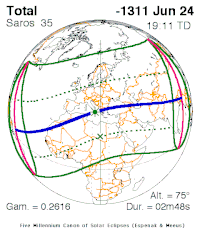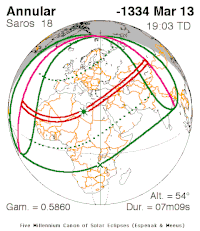
The Hittites were an Anatolian Indo-European people who formed one of the first major civilizations of Bronze Age West Asia. Possibly originating from beyond the Black Sea, they settled in modern day Turkey in the early 2nd millennium BC. The Hittites formed a series of polities in north-central Anatolia, including the kingdom of Kussara, the Kanesh or Nesha kingdom, and an empire centered on Hattusa. Known in modern times as the Hittite Empire, it reached its height during the mid-14th century BC under Šuppiluliuma I, when it encompassed most of Anatolia and parts of the northern Levant and Upper Mesopotamia.

Mitanni, earlier called Ḫabigalbat in old Babylonian texts, c. 1600 BC; Hanigalbat or Hani-Rabbat in Assyrian records, or Naharin in Egyptian texts, was a Hurrian-speaking state in northern Syria and southeast Anatolia with Indo-Aryan linguistic and political influences. Since no histories, royal annals or chronicles have yet been found in its excavated sites, knowledge about Mitanni is sparse compared to the other powers in the area, and dependent on what its neighbours commented in their texts.

Arzawa was a region and political entity in Western Anatolia during the Late Bronze Age. In Hittite texts, the term is used to refer both to a particular kingdom and to a loose confederation of states. The chief Arzawan state, whose capital was at Apasa is often referred to as Arzawa Minor, while the other Arzawan kingdoms included Mira, Hapalla, Wilusa, and the Seha River Land.

Suppiluliuma I or Suppiluliumas I was king of the ancient Hittite kingdom. He garnered recognition within the Hittite kingdom as a great warrior and statesman, notable for successfully challenging the then-dominant Egyptian Empire for control of the lands between the Mediterranean and the Euphrates river. He rose to the throne by overthrowing the kingship of his older brother, Tudhaliya III.
Mursili II was a king of the Hittite Empire c. 1330–1295 BC or 1321–1295 BC.
Arnuwanda II was a king of the Hittite Empire ca. 1330 BC or 1322–1321 BC. He succeeded his father Suppiluliuma I, who succumbed to the plague which Egyptian captives from his Canaan campaign had brought with them to the Hittite heartland.
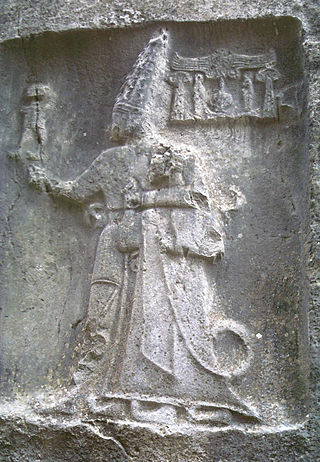
Tudhaliya IV was a king of the Hittite Empire, and the younger son of Hattusili III. He reigned c. 1245–1215 BC or c. 1237–1209 BC. His mother was the great queen, Puduhepa.
Hayasa-Azzi or Azzi-Hayasa was a Late Bronze Age confederation in the Armenian Highlands and/or Pontic region of Asia Minor. The Hayasa-Azzi confederation was in conflict with the Hittite Empire in the 14th century BC, leading up to the collapse of Hatti around 1190 BC. It has long been thought that Hayasa-Azzi may have played a significant role in the ethnogenesis of Armenians.

Tudhaliya III was a king of the Hittite Empire. In academic literature, this name can refer to two separate individuals. One is known under the Hurrian name Tasmi-Sarri. He could also be referred to as Tudhaliya II or Tudhaliya III.
The Kaska were a loosely affiliated Bronze Age non-Indo-European tribal people, who spoke the unclassified Kaskian language and lived in mountainous East Pontic Anatolia, known from Hittite sources. They lived in the mountainous region between the core Hittite region in eastern Anatolia and the Black Sea, and are cited as the reason that the later Hittite Empire never extended northward to that area. They are sometimes identified with the Caucones known from Greek records.
Tarḫuntašša was a Bronze Age city in south-central Anatolia mentioned in contemporary documents. Its location is unknown. The city was the capital of the Hittite Empire for a time and later became a regional power in its own right. The kingdom controlled by the city is known by the same name and its approximate borders are known from texts.
Kupanta-Kurunta was a king of Mira known for his involvement in Hittite geopolitics. He was born in the 1330s or 1320s BC at Mira in western Anatolia, in one of the princely families. His father joined a coup against king Mašḫuiluwa. The Hittite king Suppiluliuma I married Mašḫuiluwa to his daughter Muwatti and reinstalled him. Kupanta-Kurunta's father apparently died or was exiled soon after. Mašḫuiluwa then asked Suppiluliuma's successor Mursili II if he could adopt Kupanta-Kurunta as a son.
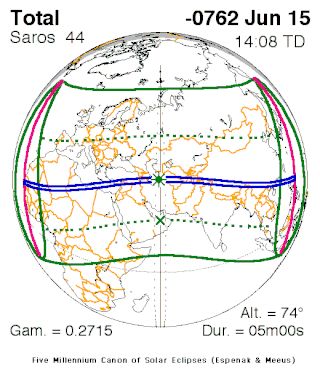
The Assyrian eclipse, also known as the Bur-Sagale eclipse, is a solar eclipse recorded in Assyrian eponym lists that most likely dates to the tenth year of the reign of king Ashur-dan III. The eclipse is identified with the one that occurred on 15 June 763 BC in the proleptic Julian calendar.
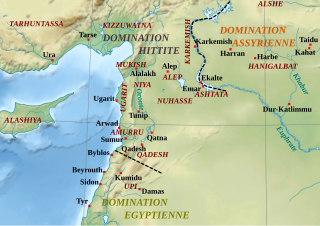
Nuhašše, was a region in northwestern Syria that flourished in the 2nd millennium BC. It was east of the Orontes River bordering Aleppo (northwest) and Qatna (south). It was a petty kingdom or federacy of principalities probably under a high king. Tell Khan Sheykhun has tenatively been identifed as kurnu-ḫa-šeki.
Dakhamunzu is the name of an Egyptian queen known from the Hittite annals The Deeds of Suppiluliuma, which were composed by Suppiluliuma I's son Mursili II. The identity of this queen has not yet been established with any degree of certainty and Dakhamunzu has variously been identified as either Nefertiti, Meritaten or Ankhesenamen. The identification of this queen is of importance both for Egyptian chronology and for the reconstruction of events during the late Eighteenth Dynasty.
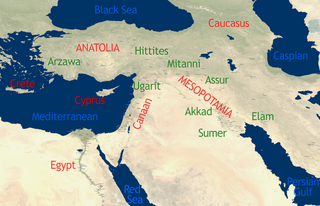
The chronology of the ancient Near East is a framework of dates for various events, rulers and dynasties. Historical inscriptions and texts customarily record events in terms of a succession of officials or rulers: "in the year X of king Y". Comparing many records pieces together a relative chronology relating dates in cities over a wide area.

Hapalla, also written as Haballa, was a kingdom in central-western Anatolia during the Late Bronze Age. As one of the Arzawa states, it was a sometime vassal and sometime enemy of the Hittite Empire.

The Battle of Ganuvara was fought between the Hittite Empire and the Hayasa-Azzi confederation during the reign of the Hittite king Mursili II. The Hayasa-Azzi had served as one of the Hittite’s most determined enemies for the past half century, however in a battle outside the city of Ganuvara they were decisively defeated by the Hittite general Nuvanza and would never be a threat to the Hittites again.
